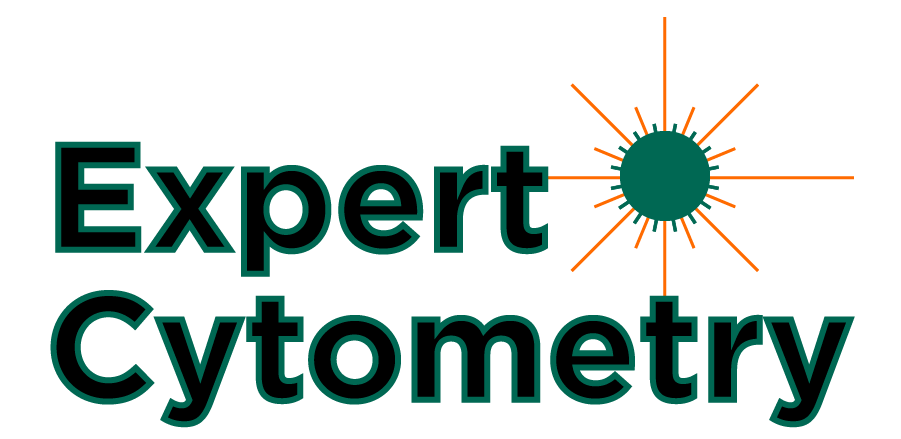3 Flow Cytometry Gates That Will Improve The Accuracy Of Your FACS Data Analysis

Flow cytometry data analysis typically involves a step where a series of gates are defined to identify the population of interest.
The development of robust gating strategies, and the communication of these strategies can be complex. Figures in papers often only tell part of the story. In the world of multicenter studies and the need for improved reproducibility, understanding the specifics of each gating strategy is critical.
As Maecker et al., pointed out in this article, the coefficient of variation due to data analysis went from 20.5% when performed at individual labs, to 4% when performed centrally. With the development of the FlowRepository, investigators can now get access to deposited data and walk through a published analysis with the raw data. This resource will continue to improve the ability to share and communicate the often complex gating strategies.
When training new users on data analysis, there are several different best practices and gating strategies you should incorporate into your analysis. There are also several misconceptions you must understand. For example, too many researchers are reliant on a simple Forward Scatter (FSC) by Side Scatter (SSC) gate to start their analyses.
In general, this basic gate is only good for high-level data reduction, as in removing debris that is on the lower edge of the axis, not for defining your entire starting population. Instead, you should rely on an antibody targeted to a specific cell type (such as CD45 if your goal is to gate on lymphocytes) as your “starting” gate, rather than define your cells based on an FSC x SSC gate alone. This will lead to a more accurate statistical analysis and better conclusions overall.
3 Flow Cytometry Gates You Should Be Using
There are 3 gates that many researchers are not using but should be using when analyzing their flow cytometry data.
These gates are critical for good data analysis. They will help remove many confounding events that may be clouding your analysis, especially where rare events are concerned.
1. The ‘Singles’ Gate.
Proper flow cytometry data analysis requires single cells. Clumps of cells, except in very special assays, can cause major problems downstream. Likewise, coincident events (two cells passing by the intercept so fast that the pulse cannot be separated) can confound your analysis. As a result, many different ways of removing coincident events that represent cell clumps have been developed.
First, it’s important to visualize and understand the shape of the electronic pulse that comes off your flow cytometer’s detector.

As the above graph shows, the pulse is composed of three components—a pulse height (-H), a pulse width (-W) and the integral of the height and the width known as the pulse area (-A). With digital flow cytometers, the pulse area is typically used to measure and report fluorescence. This is because pulse area is a more accurate measure of the fluorescence on the cells.
But what happens to this pulse when two cells either stick together or pass through the intercept point too closely?

Here, it’s clear that two things have changed—the pulse area and the pulse width. As the above graph shows, both the pulse area and the pulse width became larger compared to the single cells. You can take advantage of this change to create a gate that eliminates cells that show an increase in pulse area without an increase in pulse height.

As shown in the graph below, cells along the diagonal are the single cells to be gated on. The cells off this diagonal should be excluded from the data. For this gate, use FSC-Height (FSC-H) by FSC-Area (FSC-A). SSC-H by SSC-A can also be used.
It is important to remember to turn on the -H parameter in your flow cytometer’s software package before collecting data, so that it’s included in the FCS data file.
2. The ‘Time’ Gate.
The order which the cells pass the laser intercept is integral to the FCS file. As such, it’s possible to use time as a gating parameter to help ‘clean up’ the data. There are several reasons that the time gate should be added to your data analysis workflow.
If a stable flow stream (or flow of cells) is not established, good flow cytometry CANNOT be performed. Yes, there will be data in the FCS data file, but the quality of the data will be in question. Visualizing how well the flow of cells was by a time plot will reveal flow issues such as an unstable flow of cells (see graph below).

Areas where there was poor flow can be excluded from areas of good flow by time gating (see left-hand gate versus right-hand gate in graph below, respectively), which will ensure a higher quality of data.

Clogs can happen. Back pressure can happen. Tubes can run dry. These problems can cause issues with data acquisition, often times by affecting the flow rate, and manifesting in a loss of data. Plotting data versus time will help you identify these problems and allow you to remove the questionable events from your downstream analyses (see graph below).
3. The ‘Viability & Dump’ Gate.
Good panel design includes a viability dye and a dump channel. These two markers are labeled with the same fluorochrome (or at least occupy the same channel), and serve to reduce cells that are not of interest in the analysis.

Viability dyes help eliminate cells that are in the process of dying, which is important as these cells can skew your results. Dump channels, on the other hand, contain those antibodies targeting cells that are not of interest to your downstream analysis. By visualizing your Viability dye versus your dump channel, you’ll be able to accurately gate on your ‘live’ cells of interest (see graph below).
An easy way to create a dump gate is to use a collection of biotinylated antibodies and a streptavidin conjugate of the fluorochrome of your choice. This strategy sets you up for a magnetic bead depletion assay, should you want to sort your cells later.
Altogether, the above 3 gates would result in the following gating strategy:

Adding the singles, time, and viability & dump gates to your analysis will improve the accuracy of your results by removing cells that do not belong in your population of interest. By activating the height value in your flow cytometer’s software package, you’ll be able to draw an accurate singles gate. By looking at time versus the flow of your cells, you’ll be able to evaluate whether or not the cytometer operated correctly during your collection run. By using a viability & dump gate, you’ll ensure that you’re only looking at your ‘living’ population of interest. Using and communicating these gates in your flow cytometry experiments will help improve consistency and reproducibility of the overall field of flow cytometry data analysis.
To learn more about getting your flow cytometry data published and to get access to all of our advanced materials including 20 training videos, presentations, workbooks, and private group membership, get on the Flow Cytometry Mastery Class wait list.

ABOUT TIM BUSHNELL, PHD
Tim Bushnell holds a PhD in Biology from the Rensselaer Polytechnic Institute. He is a co-founder of—and didactic mind behind—ExCyte, the world’s leading flow cytometry training company, which organization boasts a veritable library of in-the-lab resources on sequencing, microscopy, and related topics in the life sciences.
More Written by Tim Bushnell, PhD












